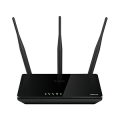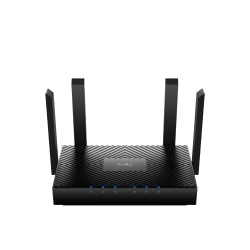Networking
Networking In BD
Ethernet connections are an excellent option for security, but most people prefer not to have all the cords that come with them, and today, not all smart devices have Ethernet ports. With an increase in mobile devices and people working during travel or at off-site locations, wireless network adapters and networking has become the norm. Wireless networking devices come in many forms, from adapters and cards to larger equipment such as wireless routers with dual-band antennas. A wireless router uses a phone or cable line to convert the data it receives to radio signals that your wireless devices can detect. Dual-band routers offer features such as device priority, increased upload and download speeds, and app-based monitoring.
Choosing the Best Wireless Routers
The best wireless routers keep all your devices linked to a single secure network. Depending on your environment, you may need to look for models with advanced features that combat interference caused by neighboring apartments, homes with multiple levels, or cross-frequencies from other electronic devices. Varying in power and capacity, all models allow you to stream data and media from your phone, computers, gaming systems, Smart TVs, and accessories that pair with Bluetooth adapters. The options are as limitless as your tech-savvy hobbies and interests, but they all rely on one thing: a strong connection.
Benefits of Wi-Fi Routers
You face cumbersome Ethernet cords scattered throughout your home or office without routers or wireless range extenders to expand your broadband internet service. In addition, smart devices such as cell phones and tablets can't access hardwired connections. The best wireless routers on the market are 802.11ac models, each with its own unique set of features. Ultimately, you should look for routers with at least four 10/100/1000GB Ethernet ports, so you can add multiple devices that may require hard connections. High-quality brands such as Linksys routers offer additional features such as USB ports that make it easy to plugin printers and other systems. Certain models also offer restrictive controls, which let parents and office personnel limit the websites that people on a shared connection have access to.
Extending Your Wireless Signal
If your home or office has multiple levels, it can be difficult to maintain signal strength the farther you venture away from the router. Avoid Wi-Fi dead zones by using a whole-home Smart Wi-Fi system to extend your reach. These can include a single device with amplified signal strength, or dual-band routers with multiple extenders. The additional devices track your router's signal and then amplify and rebroadcast it.
Depending on the placement of the extender, your signal may lose its strength. In this case, wireless bridges can connect the networks from two networks, forming a Wi-Fi bridge. Connections range from Wi-Fi to Ethernet, Wi-Fi to Wi-Fi, and Bluetooth to Wi-Fi bridges. Whichever source becomes the primary communicator transmits to whatever devices are synced with the bridge.
A third option to consider is wireless access points. These networking devices form wireless local area networks (WLANs) that serve as access points for Wi-Fi transmission. Many people use these hotspot connections in homes, but they present the power and flexibility to use in office settings or even on the go.
What Are Wireless Network Adapters?
Wireless network adapters allow devices to connect to wireless networks even if the devices don't have onboard wireless capabilities. Wireless USB adapters are an excellent choice for desktop computers that only have Ethernet connectivity. Laptops and desktop computers can also integrate wireless network cards if their systems support them. There are three main types of wireless network adapters and cards:
- Wi-Fi: Connects to LANs
- Cellular: Delivers 3G, 4G, and 5G cellular service
- Bluetooth: Short-range wireless transmission between devices
Use Bluetooth adapters to connect non-wireless devices to your network, or stream audio to Bluetooth-compatible accessories such as speakers or headsets.
Wireless Networking That Boosts Range
Use wireless bridges to connect devices that require an Ethernet connection (like cable boxes) to your wireless router. Large companies that need to extend their coverage area can use range extenders that grab router signals and rebroadcast them for better overall coverage. For small offices or homes with fewer wireless devices, repeaters are a suitable option. Range repeaters are basically mini Wi-Fi extenders that provide short-distance Wi-Fi range extensions for homes. To avoid dead spots entirely and get full wireless coverage at incredible speeds, you can purchase a whole-home smart Wi-Fi system.
-300x91.png)




-250x250.jpg)




-250x250.jpg)











